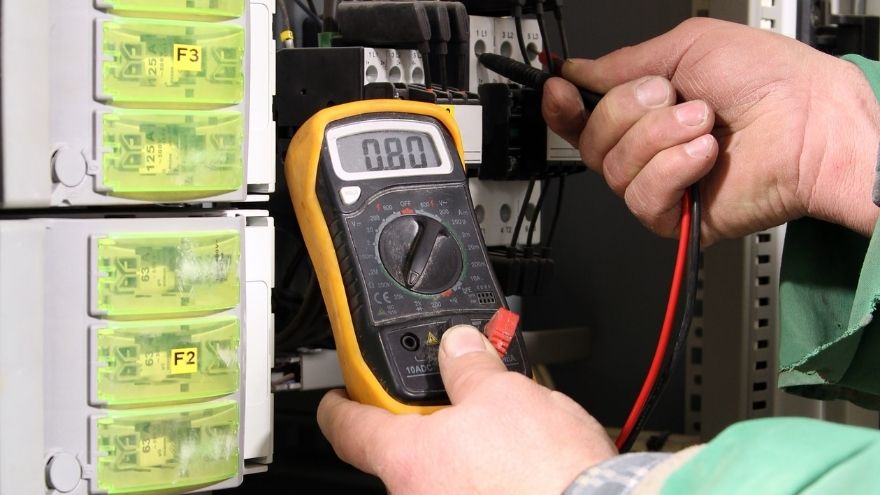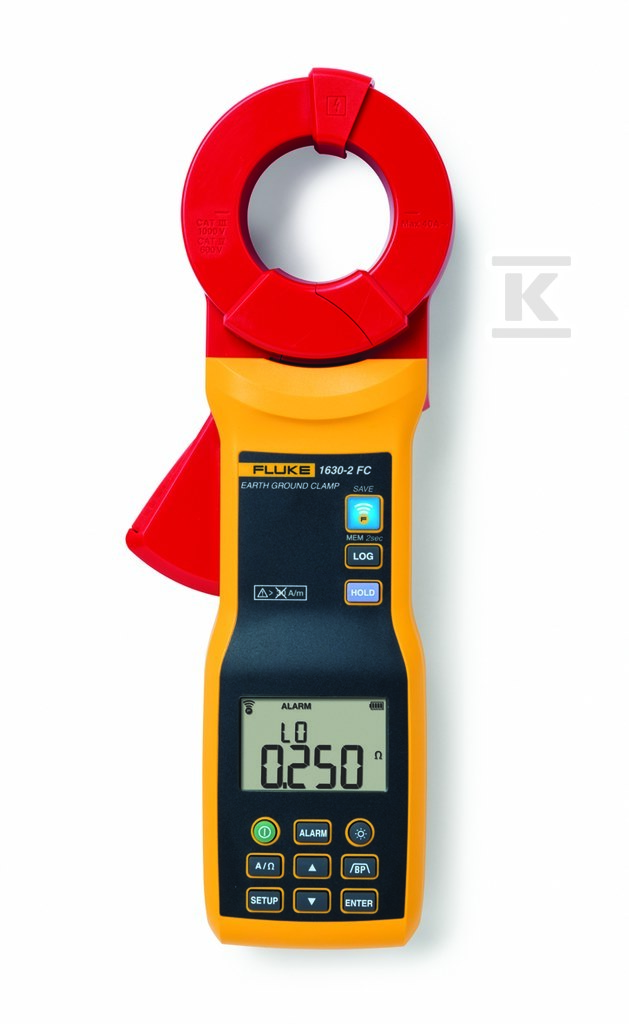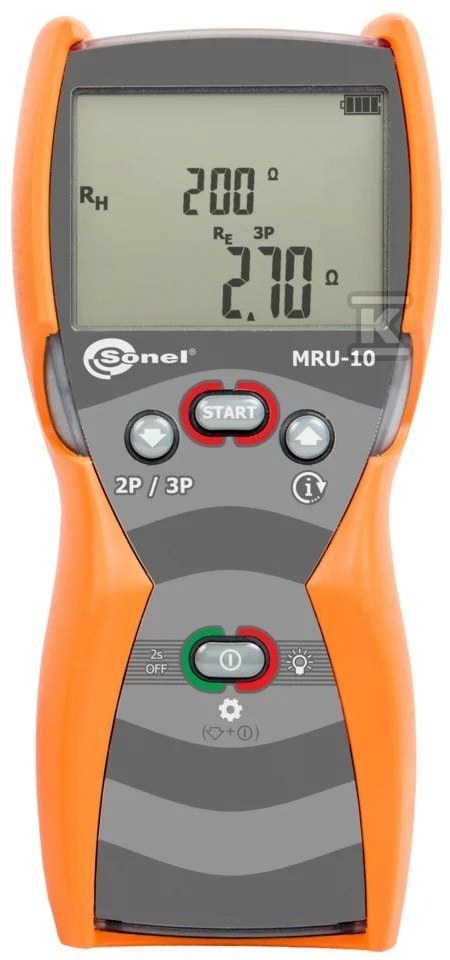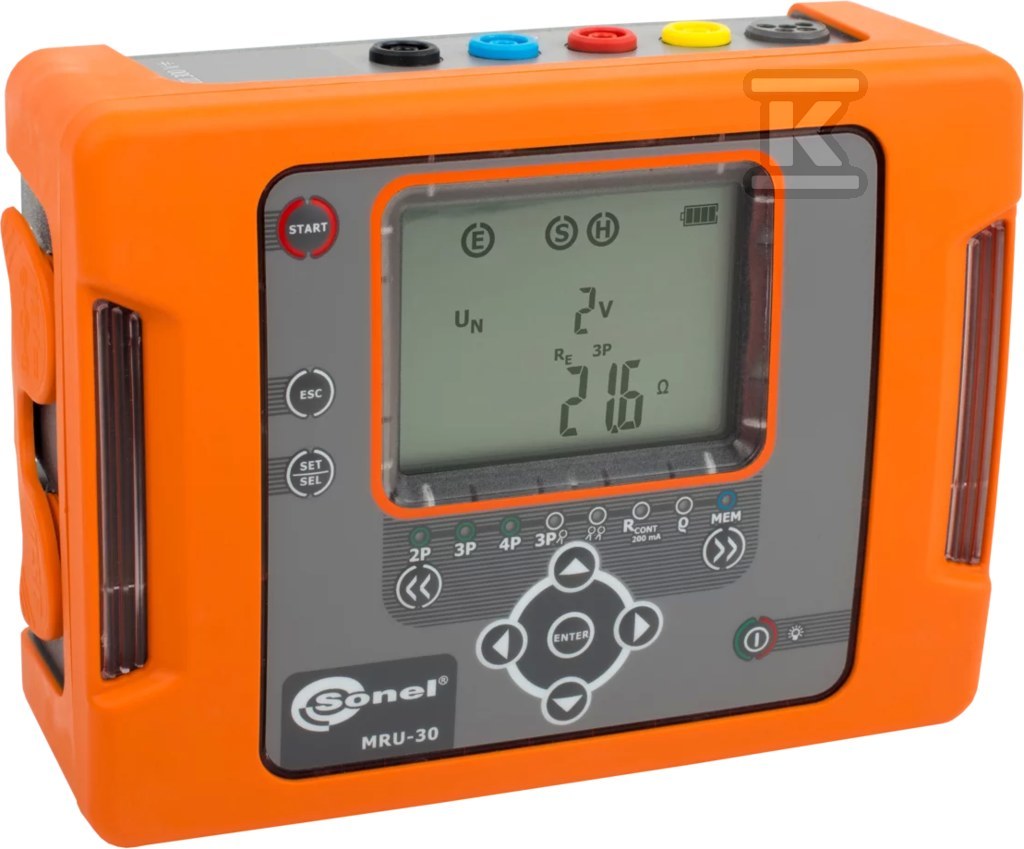In home and industrial installations, not only the value of the electric voltage is crucial, but also other parameters that affect the safety of the flow of current in electrical installations. One of the key elements is resistance, or electrical resistance in the circuit of wires. This is one of the physical quantities that are important from the point of view of electrical installations, or more precisely, their construction from scratch. Do you know how to determine the resistance value of electrical devices and installations? See the guide and your work will be safer!

Check the grounding resistance meters at the Onninen wholesaler
What is electrical resistance – resistance?
The definition of electrical resistance is simple. The unit of electrical resistance is Ohm (Ω). Resistance refers to the resistance a conductor offers to the flow of current to an electrical outlet or other device that uses current to operate.
 In practice, resistance can be determined when we know the voltage and the electric current. It is important that the calculated values apply to DC circuits. Specific electrical equipment and modular equipment can only function properly without the risk of damage when we know the optimal value of resistance and other parameters of the installation that is being built or modernized.
In practice, resistance can be determined when we know the voltage and the electric current. It is important that the calculated values apply to DC circuits. Specific electrical equipment and modular equipment can only function properly without the risk of damage when we know the optimal value of resistance and other parameters of the installation that is being built or modernized.
In electrical installations, accurate measurement of insulation resistance is key. The insulator can be various materials, such as rubber, paper, glass, wood, plastics. These lead to a resistance that is lower or higher, depending on the material used to protect the wires in the installation.
There are two rules:
- The higher the resistance value, the lower the current flow in the installation. If the insulation resistance is too high, it may indicate damage to the wire, e.g. a burnout.
- The lower the resistance (electrical resistance value), the greater the current flow. Similarly, when the insulator is damaged or the electrical connections with wires are overheated, the measured values can be very different.
Therefore, measuring resistance is crucial to avoid possible damage in electrical installations and ensure proper functioning of the installation.
How to calculate the formula for electrical resistance?
Unfortunately, electrical resistance measurements cannot be taken on a working installation, i.e. one in which current is constantly flowing. Mainly because of this, it is crucial to measure the voltage and current intensity beforehand. These are two parameters that affect how high or low the calculated resistance covering the electrical installation will be.
The formula for calculating electrical resistance is: R = U/I , where:
R – resistance.
U – electrical voltage.
I – electrical intensity.
The relationship between voltage and current of the power supply in an electrical installation is crucial to perform precise resistance measurements. Furthermore, the calculations must take into account the types of overloads and the length of the wires in the electrical network. In practice, resistance is proportional to the length of the conductor, but inversely proportional to its cross-section. Additionally, it depends on the material used for insulation and current transfer.
When is ground resistance measurement useful?
 In practice, grounding resistance measurement is necessary already at the planning stage of a construction investment. This makes it easier to later select appropriate surge arresters that protect the entire electrical installation against surges, as well as devices connected to the network.
In practice, grounding resistance measurement is necessary already at the planning stage of a construction investment. This makes it easier to later select appropriate surge arresters that protect the entire electrical installation against surges, as well as devices connected to the network.
Analyzing the grounding resistance is important to ensure the proper functioning of the electrical and lightning protection installations at a later time. The ambient temperature is not of major importance here, although it can generate slight deviations in the measurements.
Resistance measurement is used in various situations – not only when there is a risk of overloading electric generators, but also when there is excessive load on the electrical installation in the building. Such measurements in relation to grounding are useful during:
- construction of new electrical installations,
- carrying out modernization of existing installations,
- electrical failure at home or business.
Determining the resistance (Ohm parameter) affects the safety level of using the electrical installation and also allows you to quickly detect whether any wire in the system has been damaged.
Resistance measurement is also necessary to check whether circuit breakers and differential circuit breakers are functioning properly in the electrical installation.
How to properly measure grounding resistance with a meter?
 The device needed to measure resistance in a working electrical installation is an ohmmeter or multimeter. To measure resistance, you must:
The device needed to measure resistance in a working electrical installation is an ohmmeter or multimeter. To measure resistance, you must:
- Make sure your work area is safe. Check the condition of the probe and measuring cables.
- Connect the measuring probes to the meter and to the electrical installation.
- Set the meter settings to measure current resistance.
- When the meter measures the voltage drop, you will get the measurement result.
Note! According to the PN-IEC 60364-6 standard, the maximum permissible value of protective earthing resistance is 30 Ω.
Electrical resistance tests are performed using two methods – point and time-based. The latter option is more accurate and allows for precise determination of resistance, regardless of the ambient temperature.
Check the grounding resistance meters at the Onninen wholesaler